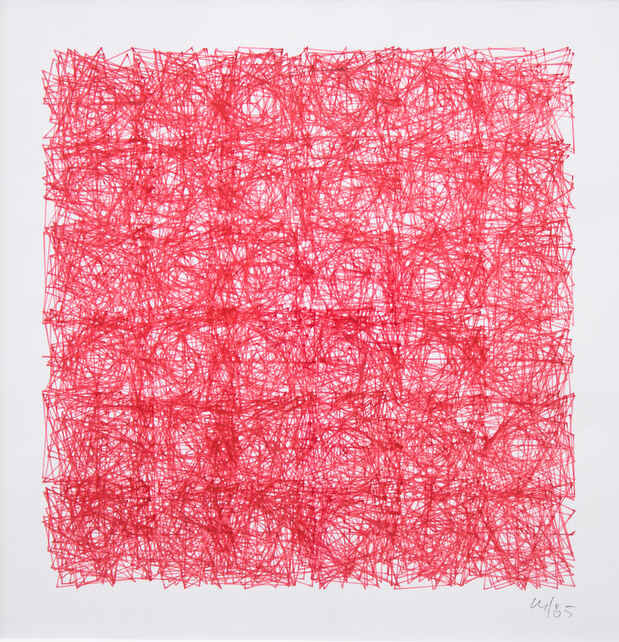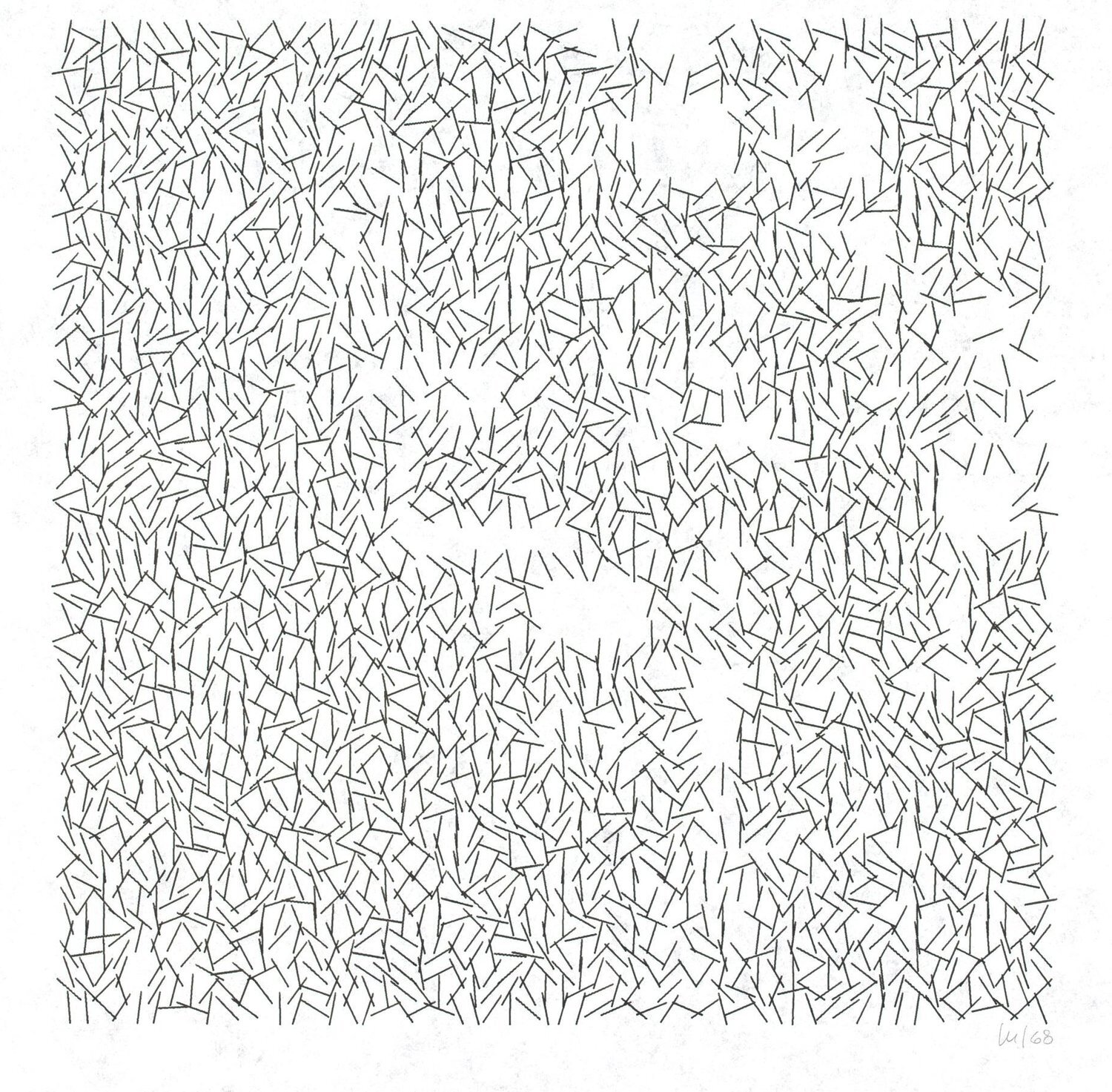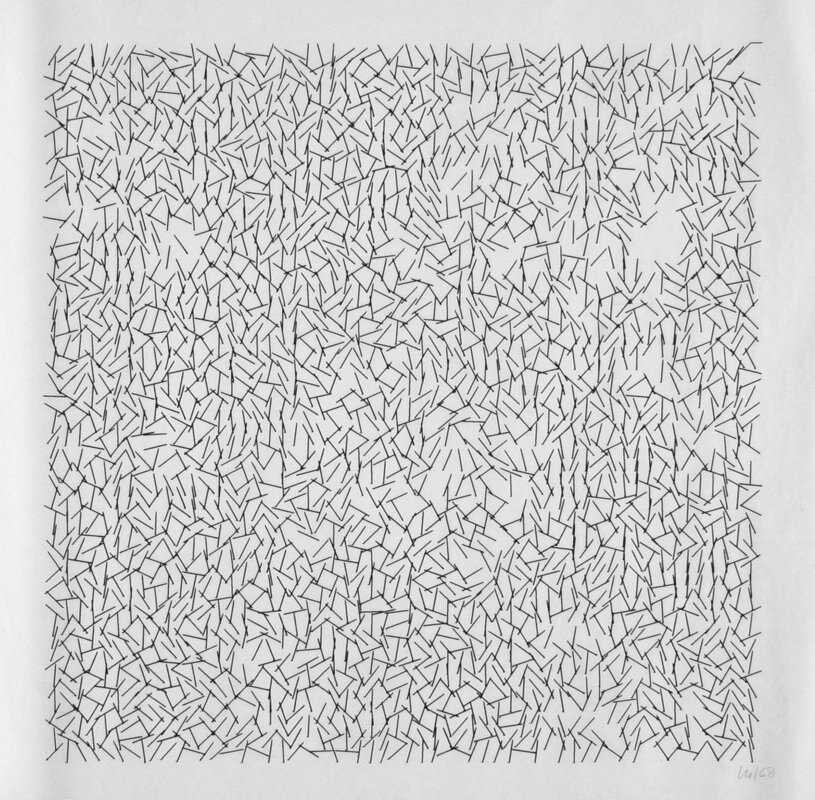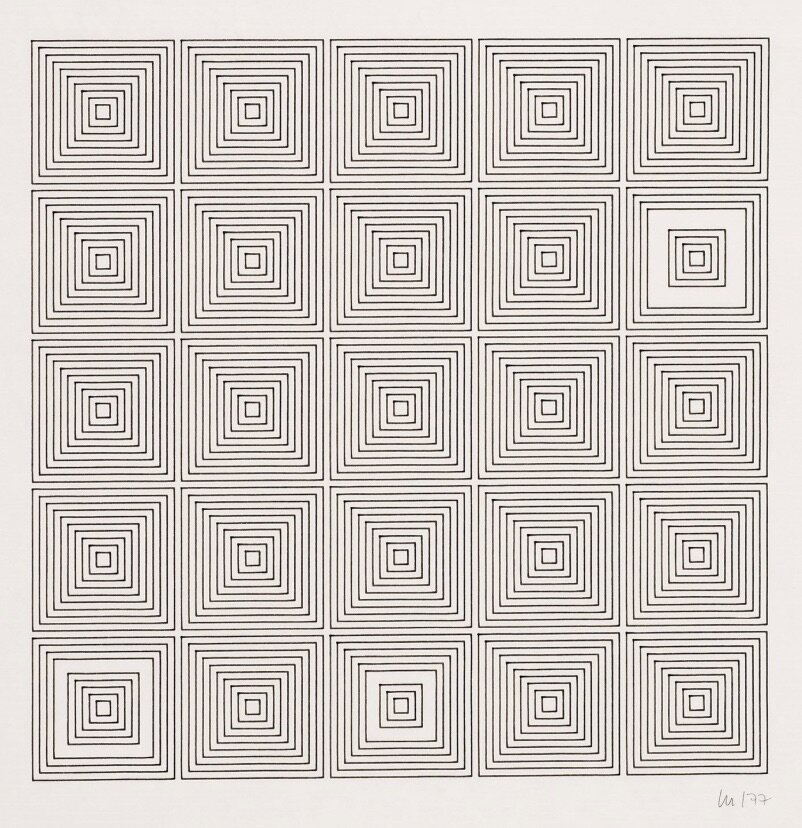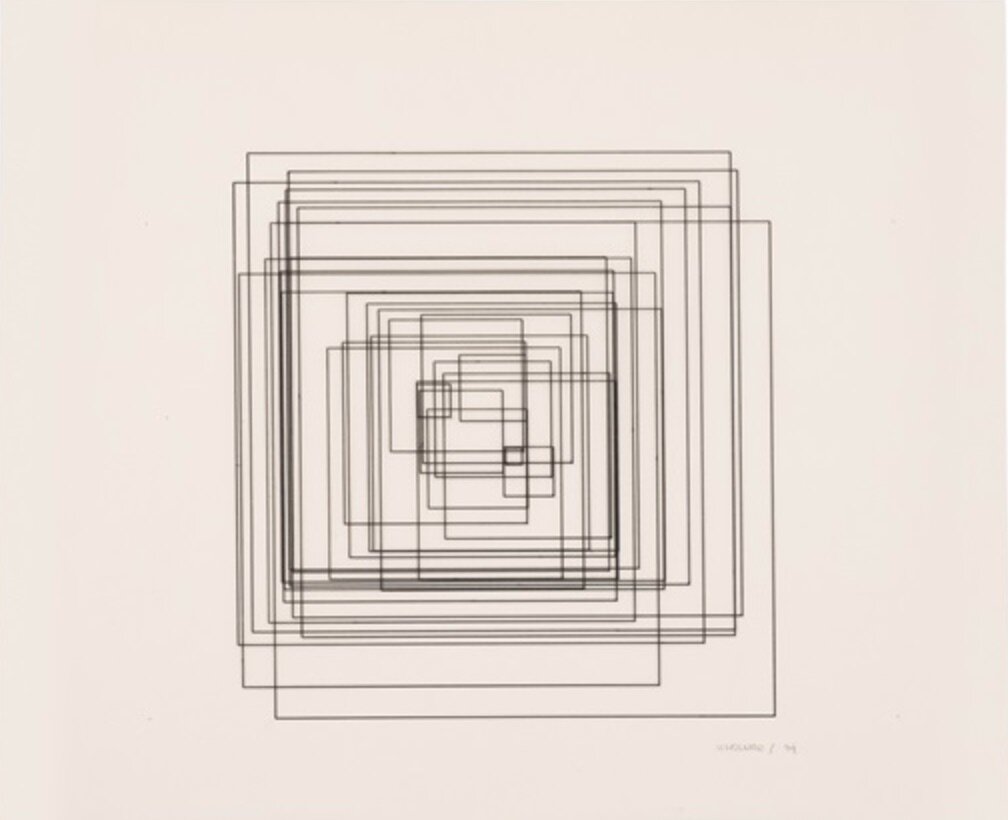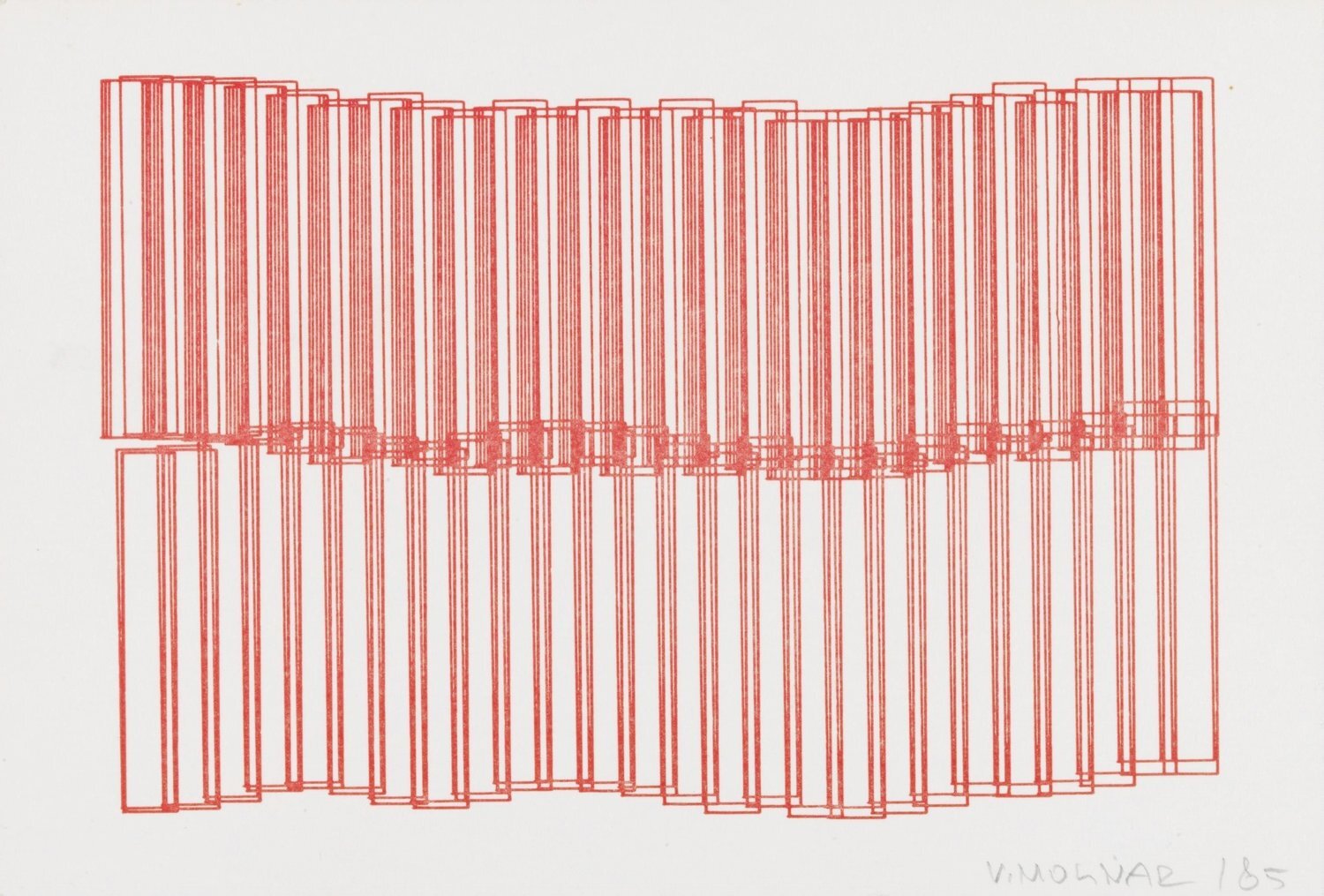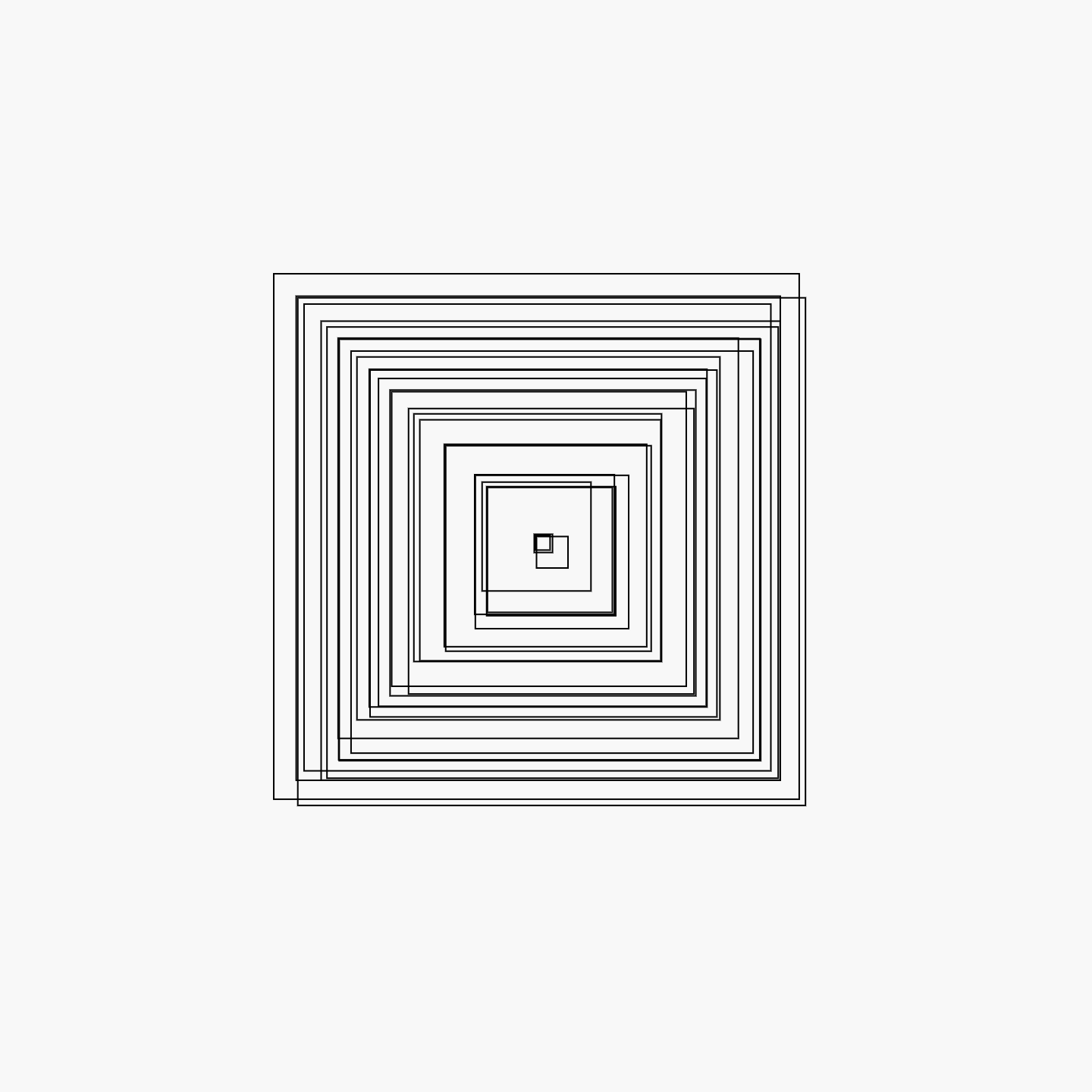Day 61 - Vera
I’m back! I spent a week in a cottage in Northern Ontario with no wifi and limited screen time. I read, I hiked, I slept, I sat quietly. It was hugely restorative. This challenge has been really great but, on top of managing my day job, home life, relationships and overall mental and physical wellbeing, it’s often also been stressful. I know discipline is important but I also don’t want to burnout, so you can likely expect another break or two before I complete this challenge.
I spent some time this weekend researching generative art (I literally googled “what is generative art”…so like I am VERY PROFESSIONAL AND KNOW WHAT I AM DOING OVER HERE, EVERYONE) and came upon a really great article by Jason Bailey. Jason gives an overview of the beauty and potential of generative art along with a bit about its history. He also dedicates an entire section to the achievements of women in pioneering the craft. In my brief encounter with generative art and computational design, I’ve encountered a notable lack of women so this was surprising. I’ve decided to do some digging and choose a few of the artists to feature this week, each day challenging myself to create a sketch inspired by their work.
I’m starting with Vera Molnár, one of the pioneers of computer and algorithmic arts. Vera was born in 1924 in Hungary, trained as a traditional artist, and studied for a diploma in art history and aesthetics at the Budapest College of Fine Arts before relocating to Paris in 1947. In 1968 she began working with computers, one of the first artists to do so, creating algorithmic paintings based on simple geometric shapes and geometrical themes. On painting with a computer she says:
At any moment, the artist is able to modify the value of one or several points, or even the total number of them. As a result, innumerable successive approaches (many sketches, to use the accepted history-of-art term) can be shown on the screen. Proceeding by small steps, the artist is in a position to delicately pinpoint the image of dreams. Without the aid of a computer, it would not possible to materialize quite so faithfully an image that previously existed only in the artist’s mind. This may sound paradoxical, but the machine, which is thought to be cold and inhuman, can help to realize what is most subjective, unattainable, and profound in a human being.
Sketch:
https://editor.p5js.org/chelseamwatson/present/VC6Me-TWC
Key 1-4: Change the size and number of square
Drawings:
Code:
xoff = 0; s = 54; function setup() { createCanvas(720, 720); background(248); noFill(); rectMode(CENTER); } function draw() { xoff = xoff + 0.1 n = noise(xoff) * 20 if (frameCount < 5) { for (var x = s; x < width - s; x = x + s) { for (var y = s; y < width - s; y = y + s) { r = random(s); rect(x + n, y + n, r); } } } } function keyReleased() { if (key == '1') { s = 54; background(248); frameCount = 0; } if (key == '2') { s = 100; background(248); frameCount = -5; } if (key == '3') { s = 175; background(248); frameCount = -10; } if (key == '4') { s = 350; background(248); frameCount = -25; } }


